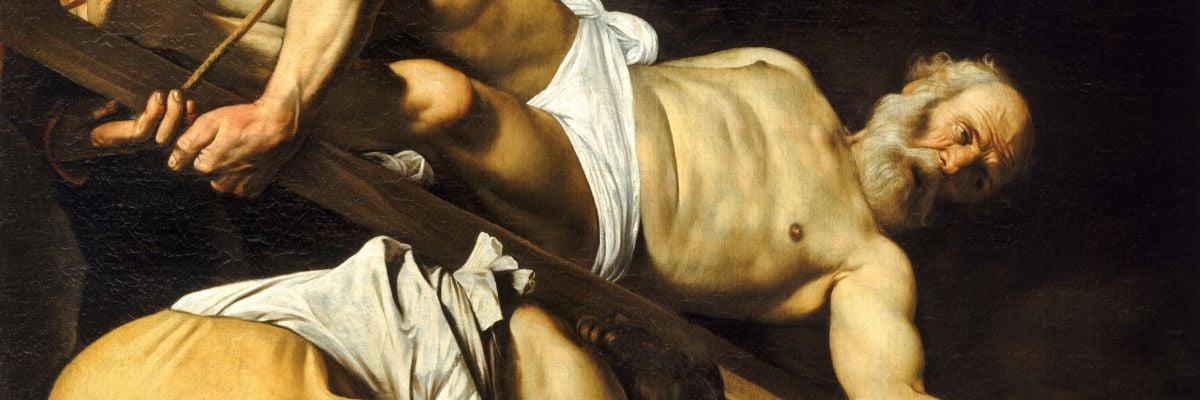
The upside down cross is an ancient symbol of St. Peter’s crucifixion. Tradition tells us that when St. Peter was martyred, he insisted that he be crucified upside down as he did not believe himself worthy to be crucified in the manner of Jesus Christ.
Many anti-Catholics argue that the Pope is the Antichrist, and a typical “gotcha” proof of this claim is that the Papal symbol of the upside down or inverted cross is satanic. Because of this, they reason, the Pope must be in league with Satan. This could not be further from the truth.
In the Gospel of John, Jesus speaks of the kind of death that Peter would suffer:
Truly, truly, I say to you, when you were young, you girded yourself and walked where you would; but when you are old, you will stretch out your hands, and another will gird you and carry you where you do not wish to go.” (This he said to show by what death he was to glorify God.) And after this he said to him, “Follow me” (Jn 21:18-19).
“You will stretch out your hands.” In the ancient world — particularly in the Christian tradition — “to stretch out one’s hands” was a common reference to crucifixion. The words ‘Follow me’ bespeak imitation of Christ’s example of obedience ‘unto death, even death on a cross’ (Phil 2:8). The chief shepherd would follow the Good Shepherd even in the manner of his death. By the time of the writing of John’s Gospel, Peter’s martyrdom had already occurred, the manner of which was arguably well attested to by his readers.
We can trace back the testimony of Peter’s martyrdom to the earliest Christian writers, including Origen, Eusebius of Caesarea, St. Clement of Rome, St. Ignatius of Antioch, St. Irenaeus, and Tertullian.
In De Præscriptione 36 (c. A.D. 200), Tertullian writes:
If thou art near Italy, thou hast Rome where authority is ever within reach. How fortunate is this Church for which the Apostles have poured out their whole teaching with their blood, where Peter has emulated the Passion of the Lord, where Paul was crowned with the death of John.
In Scorpiace 15 (c. A.D. 204), he again writes of Peter’s crucifixion:
And if a heretic wishes his confidence to rest upon a public record, the archives of the empire will speak, as would the stones of Jerusalem. We read the lives of the Cæsars: At Rome Nero was the first who stained with blood the rising faith. Then is Peter girt by another, when he is made fast to the cross. Then does Paul obtain a birth suited to Roman citizenship, when in Rome he springs to life again ennobled by martyrdom.
In his Ecclesiastical History (c. A.D. 325), Eusebius of Caesarea writes:
Peter appears to have preached in Pontus, Galatia, Bithynia, Cappadocia, and Asia to the Jews of the dispersion. And at last, having come to Rome, he was crucified head-downwards; for he had requested that he might suffer in this way…. These facts are related by Origen in the third volume of his Commentary on Genesis (III.1).
Thus publicly announcing himself as the first among God’s chief enemies, [Nero] was led on to the slaughter of the apostles. It is, therefore, recorded that Paul was beheaded in Rome itself, and that Peter likewise was crucified under Nero. This account of Peter and Paul is substantiated by the fact that their names are preserved in the cemeteries of that place even to the present day (II.25.5).
As a result of the manner in which he was crucified, the Church has used the upside down cross (without a corpus, so not a crucifix) to designate Peter, not Christ. The Pope, being the successor of Peter, employs the symbol of the upside down cross as a symbolic reminder of St. Peter’s humility and heroic martyrdom. Unlike an upside down crucifix, which seeks to invert and subvert its meaning, there is nothing satanic about an upside down cross.


